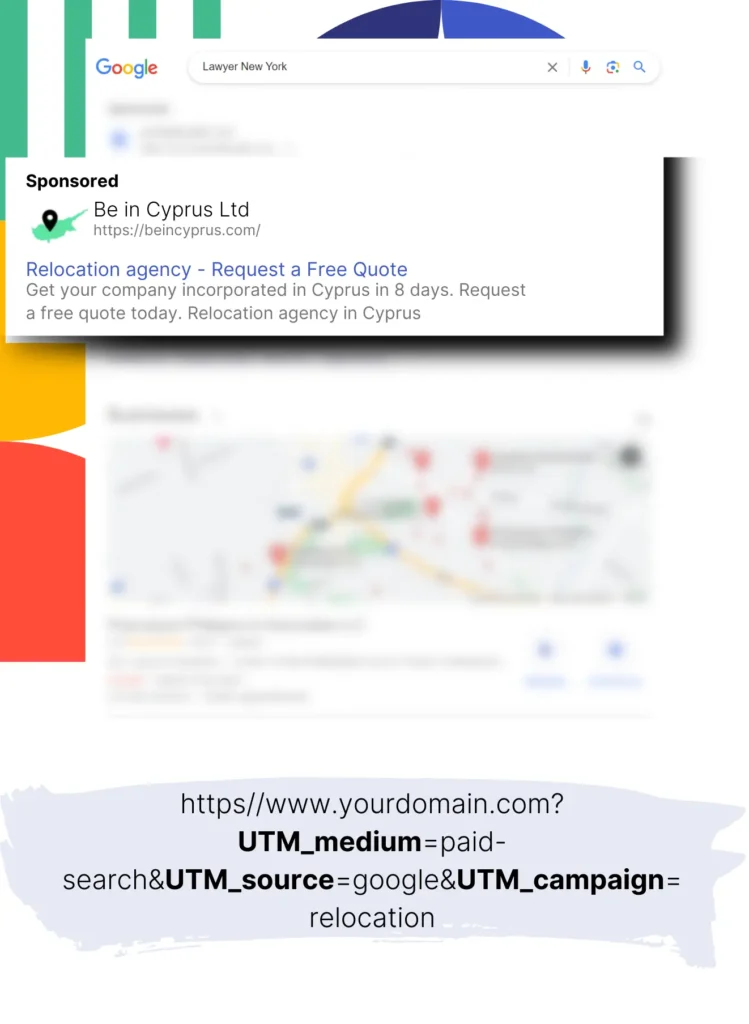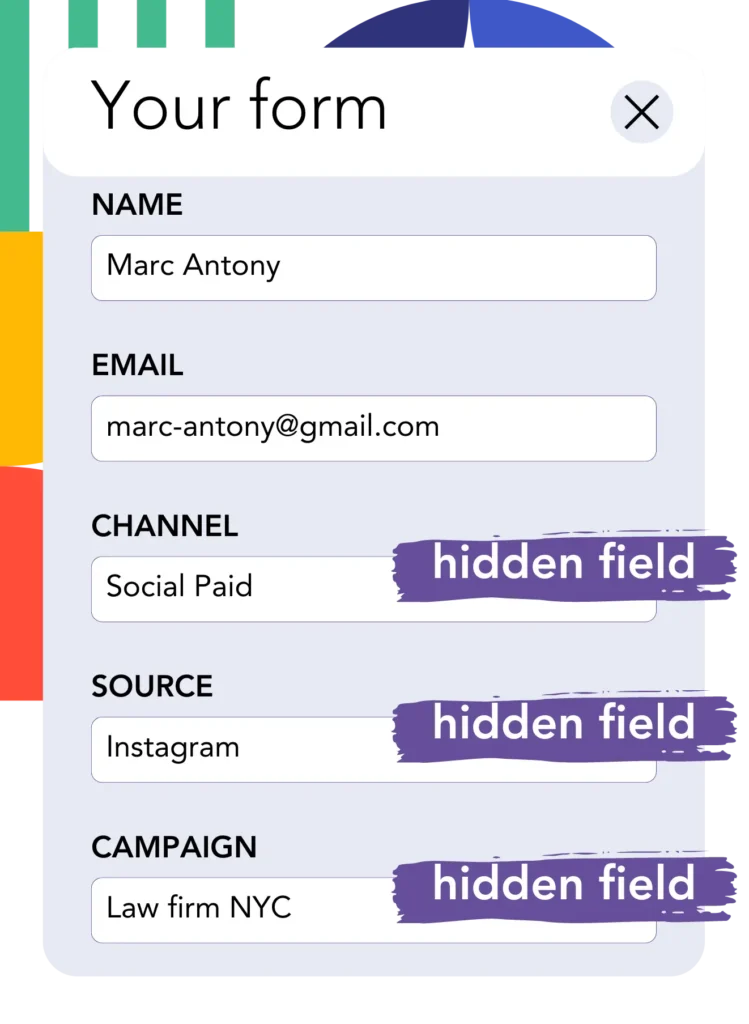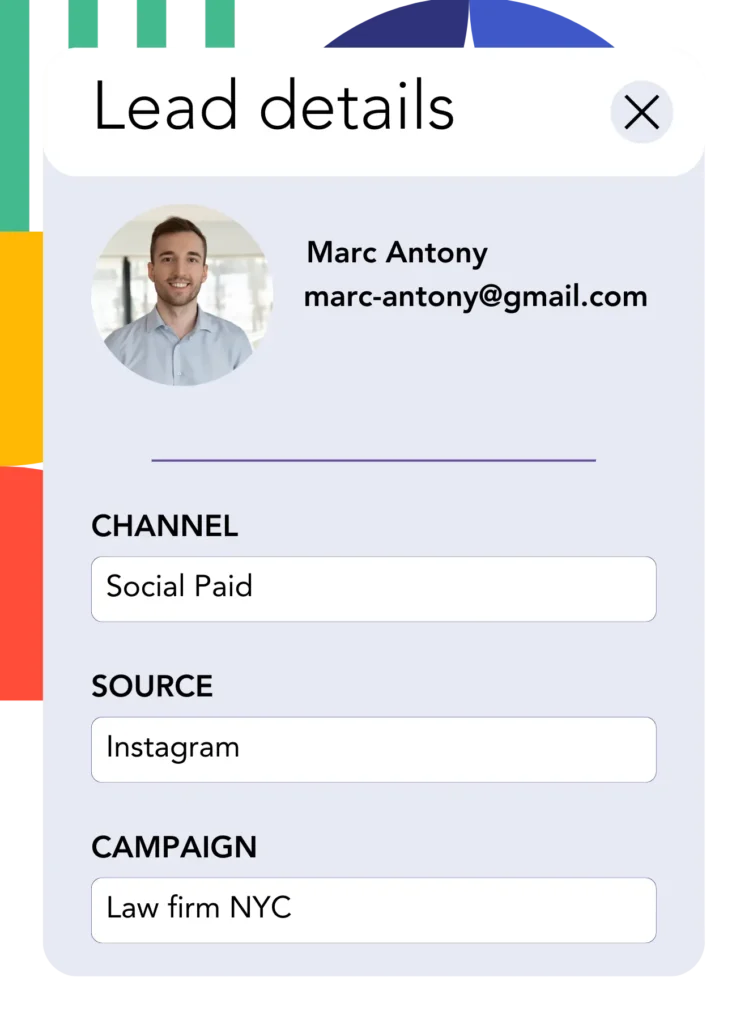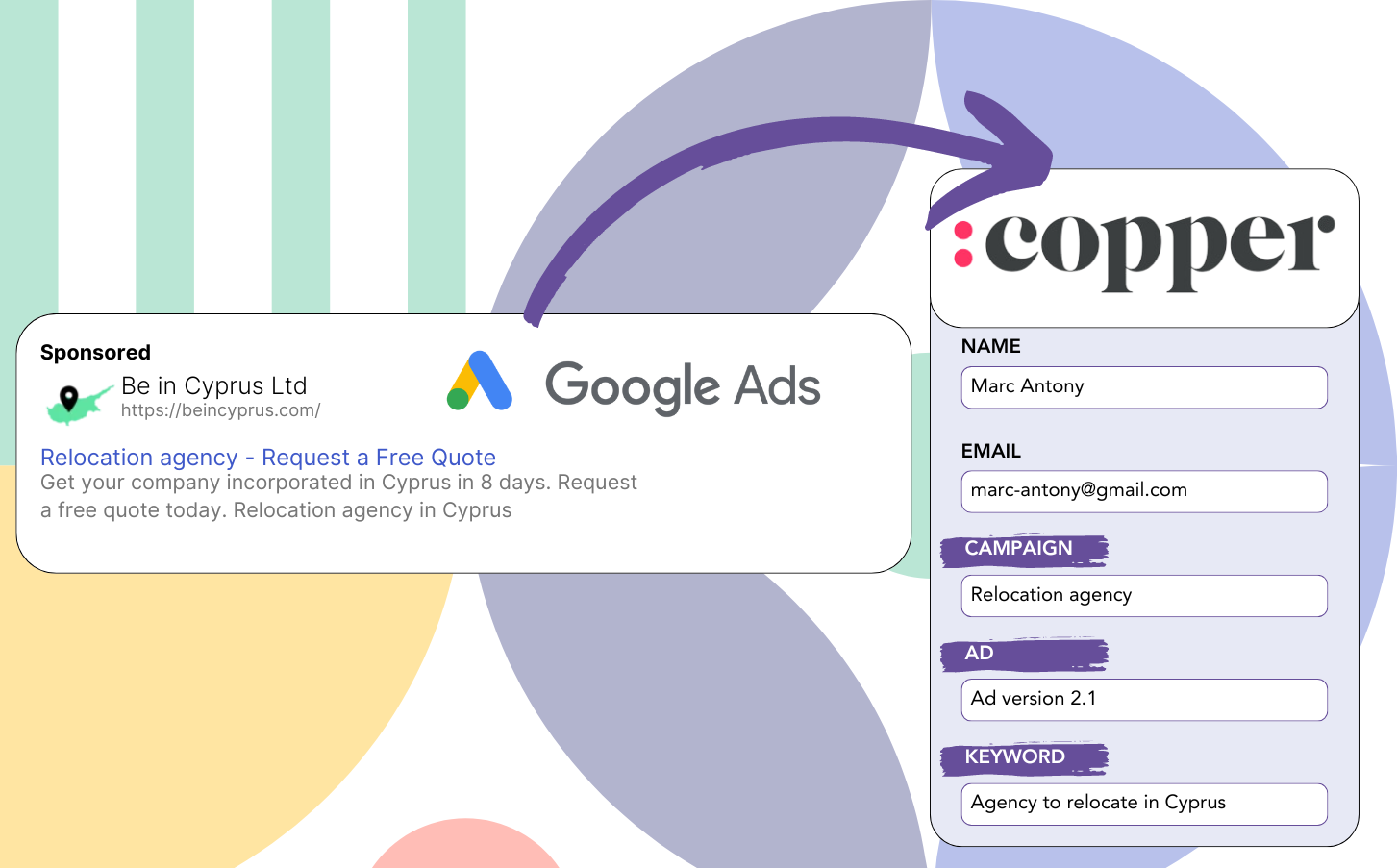Is it difficult to see which Google Ads campaigns are generating your leads?
It’s an acknowledged problem. Google Ads shows the quantity of leads from campaigns, ads, or keywords but lacks specific lead data.
Because of this, you can’t tell which campaign, ad, or keyword brought in the leads that became customers.
This issue is addressed by Leadsources.
Now, with Leadsources, you can track your Google Ads data (campaign, ad, keyword, etc.) on a detailed lead basis.
When you send your leads through Copper CRM, you can view the Google Ads data (campaign, ad, keyword, etc.) for leads that converted into clients.
You can develop reports such as: Keywords that resulted in the most clients… to decide on keyword promotion or cancellation.
Let’s get to it!
Capture Google Ads lead data in Copper CRM in 4 steps
Step 1: Add Leadsources in the head tag of your website

Sign up to Leadsources.io, and benefit from our 14-day free trial.
Add the Leadsources code to your site’s head tag. No coding background required.
Simply follow this easy step-by-step guide.
Step 2: Add the UTM parameters to your Google Ads campaigns

Include the UTM parameters you want to track in all your Google Ads campaigns.
Here are some UTM parameters to add to your ad campaign:
- UTM_source
- UTM_campaign
- UTM_term
- UTM_content
Leadsources collects data beyond what UTM parameters provide, including the channel, landing page, and subfolder, offering a complete lead picture.
Step 3: Add the hidden fields to your form

When visitors provide their details (name, email, etc.) on your form, Leadsources automatically inserts Google Ads data (campaign, ad, keyword, landing page, etc.) into the hidden fields.
Simply add hidden fields to your form to store UTM parameters. Our detailed guides are available for all form builders, with no need for coding.
Step 4: Track the Google Ads data in Copper CRM

When your Google Ads ad is clicked and a visitor lands on your page, Leadsources records all relevant Google Ads data (campaign, ad, keyword, landing page, etc.).
Google Ads information is automatically fed into the hidden fields of your form by Leadsources.
Upon submission, the Google Ads data and form responses can be transferred to Copper CRM, assuming your form is connected to Copper CRM.
How does Leadsources work?
With the Leadsources code in your website’s head tag, Google Ads data (UTM parameters and referrer) will be captured automatically on each visit.
The Google Ads data is automatically stored in the hidden fields of your form.
Leadsources collects visitor data through the referrer, even if the URL is missing UTM parameters:
- Channel
- Source
- Campaign
- Landing page
- Landing page subfolder
By using this method, you can track significant lead source details even if UTM parameters are missing, including:
- On Google Search
- On your Instagram bio link
- On your social media posts
- Etc.
Although UTM parameters are typically used to track lead sources in most tools, Leadsources allows you to monitor lead data for channels without UTM parameters:
- Organic Search
- Paid Search
- Organic Social
- Paid Social
- Referral
- Affiliate
- Display Advertising
- Direct Traffic
It helps you consolidate accurate lead source information into one central area.
How to run performance reports
Once your Google Ads data is available in Copper CRM, you can develop performance reports including:
- Leads per channel
- Revenue per channel
- Revenue per keyword
- Etc.
This helps you make strategic decisions regarding your marketing costs.
Let’s check out the various reports you can assemble.
Lead performance reports
You can run reports demonstrating the lead volume originating from:
- Channel
- Source
- Campaign
- Landing page
- Landing page subfolder
Example #1
From campaigns across channels such as SEO, PPC, and email, export the data to produce a report called “Leads by Channel.”

Example #2
Once you establish which channel is the top performer in lead generation (e.g., Google Ads), you can select this channel to analyze the lead count for each individual ad campaign.

Example #3
Once you determine the campaign with the greatest lead generation, you can look into which specific keywords are driving these leads.

Sales performance report
Knowing which ads and keywords yield the highest number of leads is informative, but do they also increase revenue?
Routing your form data to Copper CRM helps in generating detailed sales performance reports.
Example:
| Channels | Search Paid | Social Paid |
| Leads | 50 | 75 |
| Sales | 5 | 6 |
| Average order value | $150 | $100 |
| Revenue | $750 | $600 |
Your ad performance analysis on Google and Facebook showed that Social Paid ads generated more leads than Search Paid ads.
After a few weeks of analysis, you determine that the Search Paid channel generated more revenue with fewer leads than the Social Paid channel, which leads you to decide to increase the budget for Search Paid campaigns.
LeadSources tracks the source of each lead in Copper CRM, whether they come from ads, organic search, social, email, etc. and syncs that data with each submission. See the full breakdown on the lead source in Copper CRM page.

